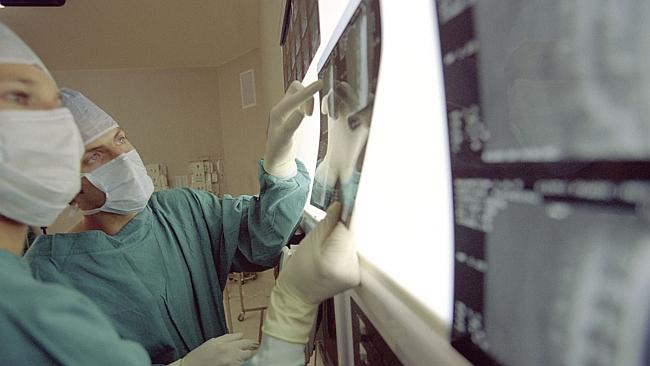
Fears for patients … Doctors think the rising cost of scans might deter people from getting medical attention. Picture: Thinkstock Source: Supplied
PATIENTS will have to pay up to $1,000 upfront to get medical imaging such as CAT scans, MRIs and X-rays as a result of a budget nasty that doctors fear could delay diagnosis.
And even after they get a Medicare rebate back the out of pocket costs patients face for scans could be more than $160, not the $7 implied in the budget.
Diagnostic Imaging Association CEO Pattie Beerens says radiologists fear “patients may be put off imaging if the costs are too high”.
Australian Medical Association president Dr Brian Owler says if a woman with a breast lump delays a scan because of the cost and the lump turns out to be malignant “that could be the difference between life and death”.
And the woman’s treatment would cost the health system a great deal more because her cancer would be more advanced, he said.
The Australian Diagnostic Imaging Association says as a result of the budget the 10 per cent bulk billing incentive imaging practices Medicare pays for all the patients they bulk bill will be axed.
From July next year this incentive will be replaced with a low gap incentive that will only apply to pensioners and children under the age of 16 who are charged a $7 fee.
The rebate Medicare provides for a scan for a general patient will be slashed from 95 to 85 per cent and then by a further $5 as a result of the government’s new policy that free medical care should end.
Radiologists will only be able to bulk bill patients if they charge a $7 fee but this will not recoup the losses they make from a 10 per cent cut it the rebate and they say they will have to charge more than $7.

Hidden budget nasty … patient medical scans could cost much more than we currently pay for now. Source: ThinkStock
Therefore, under Medicare rules, when a patient is not bulk billed they must be charged the full fee upfront and then claim a rebate back from Medicare.
Australian Diagnostic Imaging Association CEO Pattie Beerens says this means general patients should have to pay $90 upfront for an x-ray, $380 for a CAT scan, up to $160 for a mammogram and up to $190 for an ultrasound.
A PET scan will cost over $1,000 upfront.
Patients who need to pay more than $7 will have to get the rebate from Medicare which will not cover the full cost of the scan leaving them with an out of pocket expense of up to $160 for a scan.
Radiologist Dr Padnya Dugal says the out of pocket cost for a CAT scan could be $130, a bone scan $95.
A spokeswoman for the Department of Health said diagnostic imaging was a highly competitive area and “we expect that providers will continue to find ways to adapt to this relatively small change”.
“If a doctor charges the patient $7 (whether or not they are eligible for low gap or bulk billing incentives), the patient can still ‘assign their benefit’ to the provider. This means that the patient pays only the $7, and the practice claims the Medicare rebate directly from the Government,” the spokeswoman said.
The Norwest Medical Imaging service Dr Dugal works for currently bulk bills all patients and will suffer a significant loss of income as a result of the budget.
“The public has not been informed and they don’t realise the full cost, they don’t realise it is going to be more than $7,” she says.
Already she says patients have been cancelling appointments for scans thinking the $7 fee announced in the budget has already come into effect.
Ms Beerens says the radiology industry is working with Health Minister Peter Dutton to see if changes can be made.
